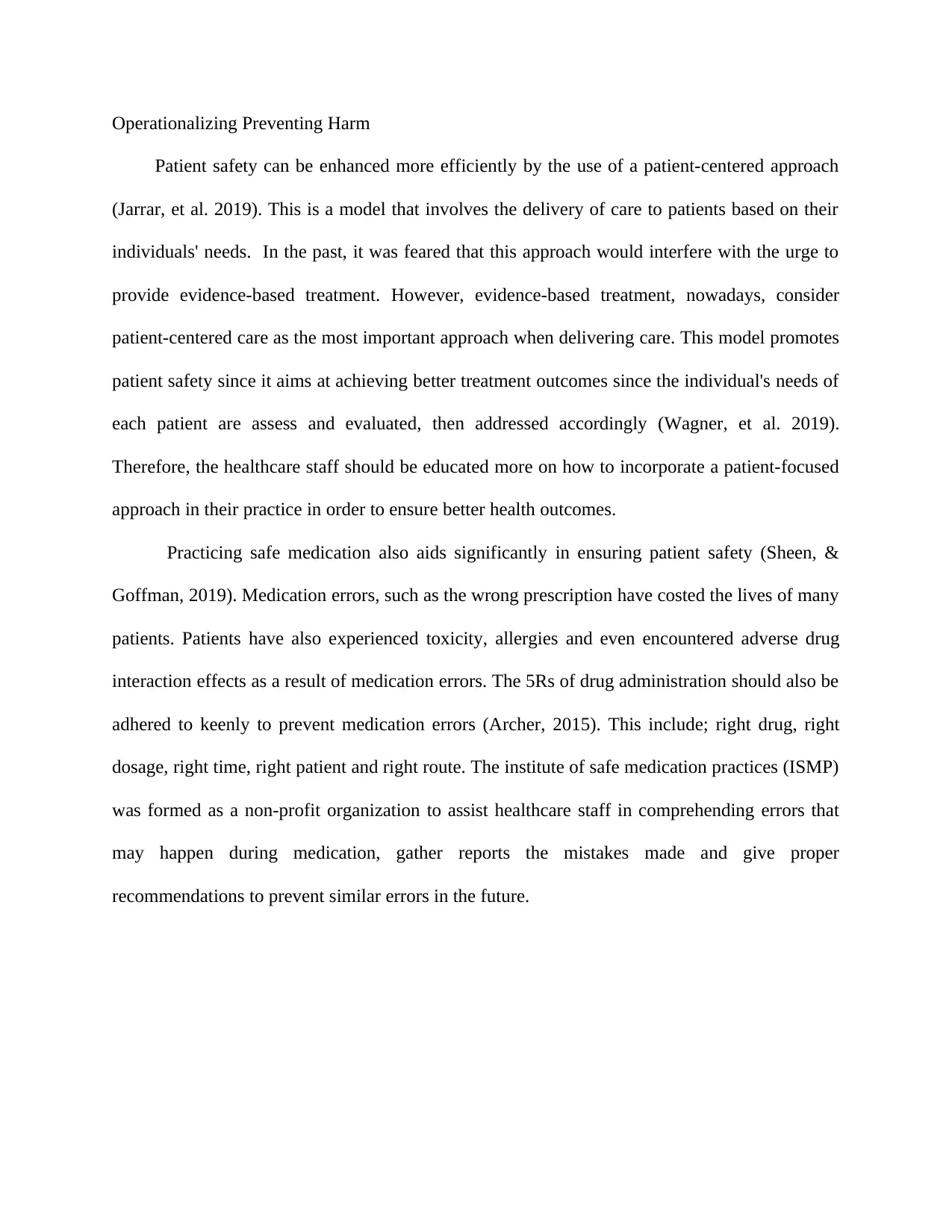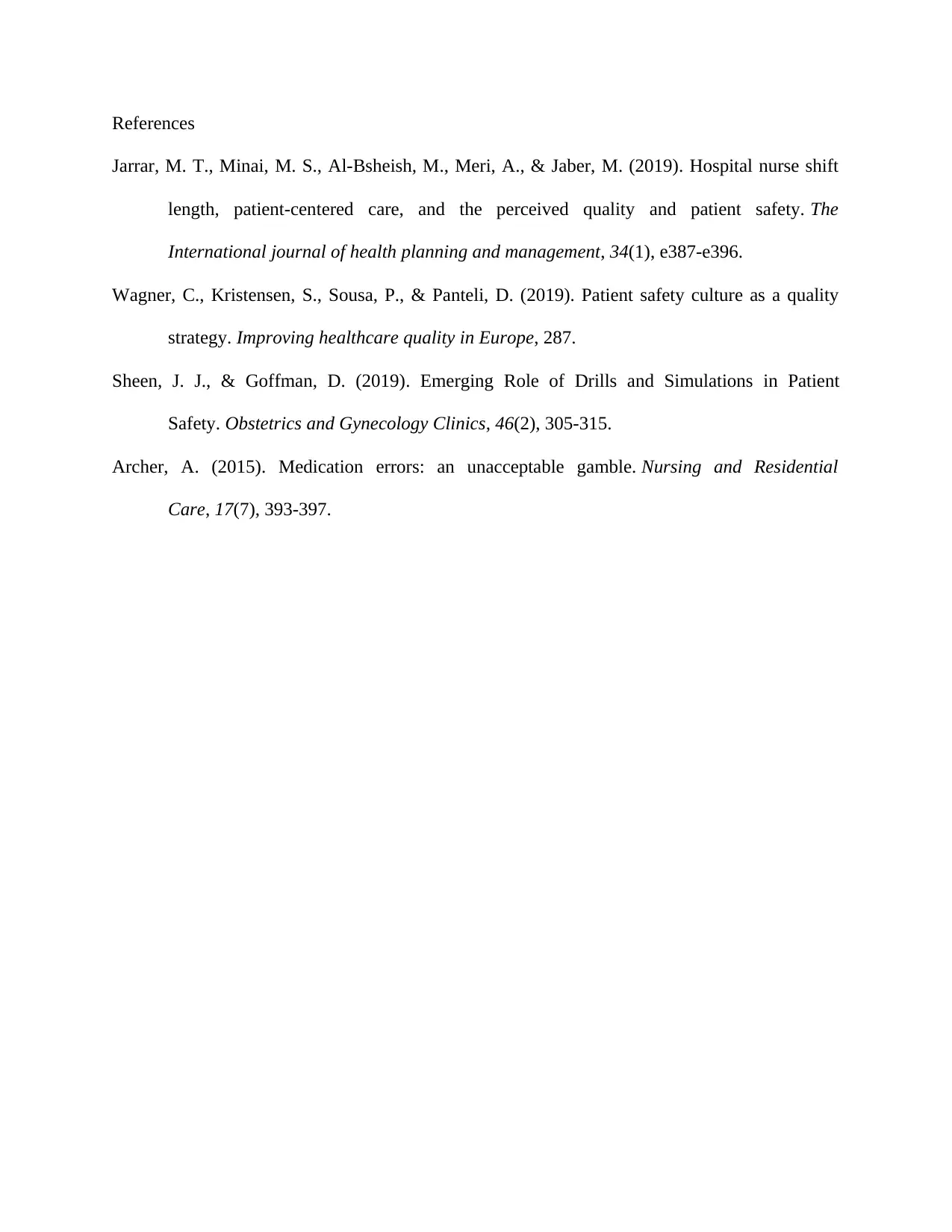Patient Safety: Medication Errors and Patient-Centered Care Analysis
VerifiedAdded on 2022/08/24
|3
|454
|21
Report
AI Summary
This report focuses on enhancing patient safety within healthcare settings. It emphasizes the importance of patient-centered care, where healthcare is tailored to individual patient needs, leading to better treatment outcomes. The report highlights the significance of safe medication practices, including adhering to the 5 Rs of drug administration (right drug, right dosage, right time, right patient, and right route) to prevent medication errors, which can have severe consequences such as toxicity and adverse drug interactions. It also mentions the role of the Institute of Safe Medication Practices (ISMP) in helping healthcare staff understand and prevent medication errors through reporting and recommendations. The report references key studies that support the importance of these practices in improving patient safety and overall healthcare quality.
1 out of 3









![[object Object]](/_next/static/media/star-bottom.7253800d.svg)